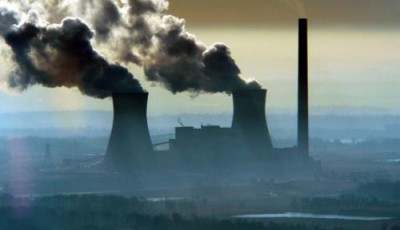Aviation industry plans to curb emissions
By Paul Brown
LONDON, 9 October, 2016 − The aviation industry has taken the first step towards limiting the ever-growing carbon dioxide emissions from aircraft in an attempt to reduce airline contributions to global warming.
Delegates at the 39th congress of the International Civil Aviation Organisation (ICAO) in Montreal, Canada, have finalised what they called “an historic agreement”, which begins in 2020 to offset carbon emissions from aircraft and create a sustainable future for international air travel.
Until now, shipping and air transport have both been excluded from the international negotiations that take place annually under the banner of the United Nations Framework Convention on Climate Change (UNFCCC).
Neither sector was mentioned at the Paris climate conference last December, when there was worldwide agreement, amid much diplomatic rejoicing, to limit emissions. This was in a bid to hold the temperature increase below 2°C, the limit politicians have agreed would be too dangerous to exceed.
Global approach
Dr Olumuyiwa Benard Aliu, ICAO council president, said: “Aviation can now claim its ‘Paris moment’.
“Air transport is not only the world’s first major industry sector to adopt a global approach to international emissions reduction, but, very importantly, States representing more than 83% of international flight operations have volunteered to participate . . . from its earliest stages in 2021.”
Although aviation contributes only 2% to the world’s carbon emissions, scientists have long held the view that because the gas is released high in the atmosphere, where aircraft produce contrails from their exhausts, it has a greater warming effect than ground level sources.
Up until this week, airlines have resisted any kind of restriction on emissions, particularly in the US, where there is a very high volume of domestic air travel.
Since the ICAO’s general assemblies take place only every three years, the deal would have had to wait until 2019 if it had not been accepted last Thursday.
“International aviation is among the fastest growing
sources of greenhouse gases”
However, to make sure it went through, several issues were fudged and put aside for specialist working groups to come up with solutions. This is the same technique that has been used many times in the main climate talks to keep the negotiations on track and avoid a breakdown.
This led to criticism from environmental groups, the main issues appearing to be that the agreement, at least initially, is voluntary, and that there is no enforcement procedure.
There are also technical issues on carbon offsets − the system whereby airlines will plant forests or support other methods of capturing carbon or reducing emissions, such as by helping financially to introduce renewables electricity production to replace fossil fuels.
Bob Perciasepe, president of the Centre for Climate and Energy Solutions, says: “International aviation is among the fastest growing sources of greenhouse gases. Without new measures, emissions are expected to triple by 2050.
Aviation emission levels
“By allowing airlines to offset emission increases with reductions in other sectors, the agreement provides an economical way to hold aviation emissions at 2020 levels.
“With this framework in place, governments and airlines should move quickly to develop rules ensuring a smooth-working market that delivers real reductions.”
He said that, despite its shortcomings, “the agreement is another major step in global efforts to combat climate change, and a clear sign that the momentum we saw in Paris continues to build”.
Carbon Market Watch, an aviation environmental watchdog organisation, believes that much needs to be resolved at a technical level to ensure the agreement produces real results.
Kelsey Perlman, policy officer for aviation and land use at Carbon Market Watch, says: “The Assembly resolution is missing clear references to sustainable development, strong international oversight, and overall environmental integrity.
“This shifts important work on these elements to technical discussions, where political issues are discussed with less public scrutiny.” – Climate News Network







